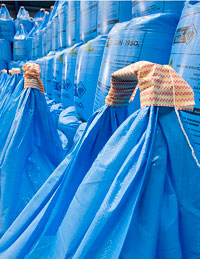Global activity dictates fertiliser price rise

Fertiliser prices have seen a significant increase this year and further rises are likely over coming months. Farmers Weekly commentator Roger Chesher asks whether this is a cynical decision by fertiliser manufacturers “cashing in” on higher wheat prices, or whether there larger economic factors at work.
The economic model that determines fluctuations in fertiliser prices is complex but has two main elements. Firstly, production costs for fertiliser, notably energy, have risen drastically over the last decade and these set the base price level over which seasonal and even monthly prices fluctuate. These fluctuations are determined by supply and demand on a global scale.
Also, world fertiliser production is broadly in balance with demand but product is made all year round with little in store. Local or seasonal peaks in demand can cause local or seasonal shortages with consequent price rises.
In this context, the UK nitrogen producer, GrowHow, is a relative minnow in the grand scheme of things and can only reflect global activity rather than set any agenda. Indeed the company found itself competing with over 2m tonnes of imported nitrogen last year, so it is far from the monopoly some people claim.
So, when farmers suddenly enter the market for nitrogen buoyed by higher grain prices and prospects of increased plantings, supplies get tight and prices rise.
Many farmers have already ordered at prices way below the current level (see table) and GrowHow is effectively sold out until November. If you want some spot nitrogen today, chances are that it will be imported.
Urea is driving the nitrogen market with prices rising almost daily. Urea is expected to remain strong to Q1 next year; another $20-30t is forecast. Stocks are tight in Europe and there are large international buyers still to enter the market.
In Q2, demand will drop off, ahead of the new season.
Phosphate production requires ammonia and sulphur and with rises in these commodities and buoyancy in the market for P, phosphate is also expected to rise in price.
Potash prices are a pawn in the boardroom battle for ownership of Potash Corporation, much discussed in the financial newspapers. The Russians wish to raise prices, the Canadians are holding them.
September 2010 (£/t delivered)*
UK 34.5% N | NK Silage grades | Imported urea | Imported AN |
£260-£265-£270 (Sept-Oct-Nov) | None | £285-300 | On par with domestic |
Complex 25.5.5 | Complex 20.10.10 | Phosphate (TSP) | Potash (Muriate) |
£265 | £285 | £325 | £330-335 |
*All illustrated prices are based upon 24 tonne loads for cash payment month following. Prices for smaller loads and 50kg bags will vary considerably.

